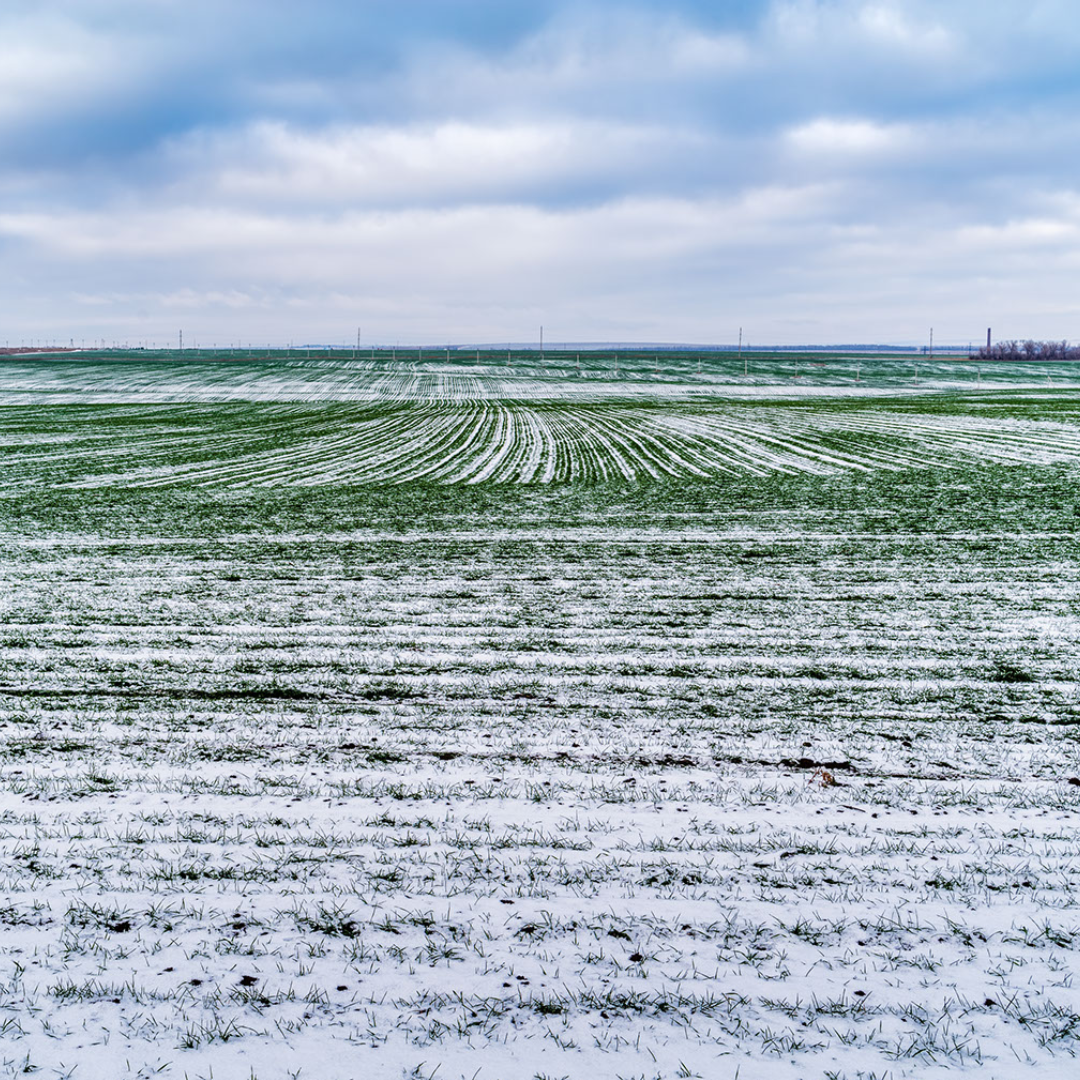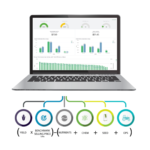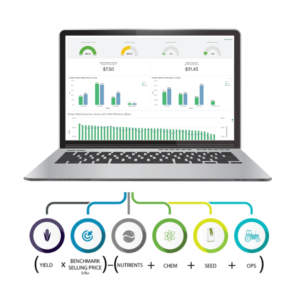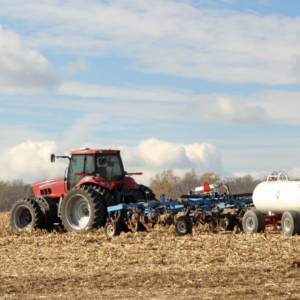
In this episode, we speak with Josh Sponheim, Agronomic Advisor in the North Central Iowa region with Premier Crop. Josh digs in on the topic of fall tillage and whether or not to use cover crops on your operation.
If you are enjoying the show, tweet us using #PremierPodcast
RENEE HANSEN: Hi, everybody, and welcome to the Premier Podcast. Thanks for joining us today. Today, I have Josh Sponheim with me, and I’ll have Josh introduce himself. And we’re going to talk about the benefits of fall tillage. So, Josh, go ahead and introduce yourself.
JOSH SPONHEIM: Hi, everybody. This is Josh Sponheim. I’m an agronomic information advisor for Premier Crop up here in north-central Iowa. I think this is my seventh season with Premier, so I’ve been here quite a while now.
RENEE HANSEN: Awesome. Thanks, Josh. Since we’re going to talk about tillage, give us a little bit of background of why tillage is so important to you and some of the background that you have.
JOSH SPONHEIM: And it’s probably not the fact that tillage is important. It’s the lack of tillage that’s more important to me and what we have found on our own farm through the years. My father actually started strip-tilling back in the early 2000s and continued to do that on our own ground, as well as having a custom business for quite a few years. He has since sold that business, but the gentleman that has bought that has continued to do a lot of custom acres. Up in our area, primarily in Mitchell County, the adoption of strip-till has been very large and probably due to the fact that there were three or four people that started in the early 2000s, along with dad, that were pretty vocal about what they were seeing and what kind of benefits that they were really getting from reducing tillage and going to that strip-till pass.
RENEE HANSEN: Yeah, so tell us: what are some of those benefits that you guys see?
JOSH SPONHEIM: Probably one of the biggest benefits we’ve seen is you’re only tilling a strip at six to eight inches wide, rather than tilling the entire soil surface, which greatly reduces, for us up here, wind erosion that we tend to get in the wintertime, especially if we don’t have a lot of snow cover. Now, in other areas, the strip-till would also help with water erosion, as well, especially in the spring. But for us up here, it’s primarily wind. The other thing that we really like is when we’re knifing in or using the coulter machines, we’re putting that PNK fertilizer right underneath where that plant is going to be growing next year. So we’re being very efficient with the fertilizer placement. And what we’ve seen up here is we can start a guy with a strip-till that has been full of tillage and not see a reduction in yield.
So that’s been the big benefit: when somebody starts doing a different tillage method, we can maintain that same yield. And what we’ve found over the years is yields have actually started to increase on our own farms and some of these other guys that have been long-term strip-till. Then, most of the guys that started back in the early 2000s up here have actually switched all their ground to no-till. So we’ve actually gone the full load up here. Where we started, when I was a kid, we were plowing, still. Then, dad started doing strip-till, and now we are no-tilling the long-term fields that have been strip-tilled for 10-plus years.
RENEE HANSEN: Yeah, so tell me that. Why did you guys switch to no-till?
JOSH SPONHEIM: The switch to no-till was probably a push from some people around here, just saying: ‘You talk about how strip-till is always that transition phase from full tillage to no-till, but you haven’t switched yet.’ So we tried a farm. We split a farm in half, and it was a night-and-day difference. I think it was a 15 to 20 bushels difference in yield on the corn. We saw better width with the no-till, and I think that was because it was a drier spring. We conserved more of the moisture, and so we’ve since switched those farms that had been long-term strip-till into no-till.
RENEE HANSEN: There’s a lot of talk when it comes to soil health right now, and it’s kind of a hot topic. How does this impact soil health?
JOSH SPONHEIM: The less we disturb that soil, the more we’re going to improve that soil health by allowing the fungi to continue to grow into long strands that we have in the soil, allowing the bacteria to continue what they’re degrading or trying to decompose in that area. Basically, trying not to disturb their homes, really, is what it is. And by doing that, then, we get a larger population in the soil of the bacteria fungi that are a good benefit to us. Not only do they help break down the prior crops’ leaves and stock that we have left out there, but they’re also mining and bringing some of that additional N, P and K from deeper in the soil that our crops may not get at.
RENEE HANSEN: Before we hit record on this podcast, I had asked you a question that, when it comes to strip-till, or just tillage in general, was: they were saying something about the combine and how a combine can affect how you should be tilling your acres. So can you explain the conversation a little bit that we were having about that?
JOSH SPONHEIM: Sure can. So the big thing we’re finding, as these combines have gotten to the size they are today — and we’re running 45-50 foot beam platforms or draper heads on the front of these things — we’re seeing a real issue with trying to spread that crop residue out behind the combine the same width as the head. And if we don’t get that accomplished, especially if we’re looking at doing no-till, we’re going in and out of different soil temperatures in the spring. Where they’re right behind the combine, where we have more, that soil is going to tend to be cooler in the spring than on the outside. Where we didn’t spread anything, it’s probably going to be a little bit warmer just because it doesn’t have that layer on top, and that sun is hitting more bare dirt.
So what we really like to preach is we need to spread the residue out behind the combine evenly, the same width as the head. That way, we have a uniform layer out there come spring, that it’s a lot easier to set the planter and move the right amount in the spring to keep that seedbed clean for us.
RENEE HANSEN: Yeah, and you said that this is something that they can adjust.
JOSH SPONHEIM: Correct. We are finding, though, as we get into the 45 and 50-foot heads — which we don’t have a lot of those up here, of course, but in other areas of the U.S. where they do have them — it gets really tough to spread that far. And I understand that these guys are trying to be more efficient and take more crop out quicker, but then we’ve got to remember what the implications down the road might be for us for that next crop year.
RENEE HANSEN: Yeah, so how are you advising some of your growers that you’re working with for some of these decisions? How do you tell them to strip-till or tell them to no-till? How do you have that conversation?
JOSH SPONHEIM: It’s different for every person. What we’ve learned is that it is a complete mindset change. So that grower has to have interest in it. If he doesn’t, I’m not going to push the issue. Of course, I would love everybody to switch to strip-till and then down the road to no-till, but I understand that some guys aren’t in that mindset. They want to keep doing things the way they have been doing. And it’s not that it’s always bad what they’re doing, but I think there are better ways, from a long-term farming standpoint, to do things differently when it comes to soil health and keeping soil around for the next generation of farmers.
So it’s, like I said, a mindset change, and that has to come from that grower. And a lot of times what it gets into is talking about yields, talking about what the cost of equipment is going to be. The nice thing in this area up here is we have a lot of guys that do some custom work. So guys can try it for a couple years before they go make the investment on their own strip-till rig, if it will be. It’s just a simple conversation, and put that bug in their ear and let them think on it, ponder on it. And usually, about a year or two later, it transforms into a more in-depth conversation on what exactly is involved in switching into those, whether it’s strip-till or into no-till or whatever it may be.
RENEE HANSEN: Yeah. So, after they’ve done it a couple years, what kind of data, or do you have any data examples that you share with them that help them continue doing the type of tillage behavior that they want to continue with?
JOSH SPONHEIM: I have all kinds of data that I can pull up from guys that have switched in the past. And like I mentioned earlier, we have never really seen a yield decrease when we switched a guy from full-width tillage to strip-till. However — I learned this with Premier too, of course — the best is to see the data on their own farms. So we can start pulling that apart with Premier Crop Systems and say: ‘No, this did not hurt us in yield, and maybe you even gained a little bit in yield.’ And this year, with the dry weather we had, some of my higher-yielding guys are the ones that have reduced tillage to almost nothing, just because we conserve every drop of moisture we had in the soil in the spring, which was pretty crucial when we were, I think, in this area, roughly eight inches of rain behind until August. From April one until August one, we were way behind on moisture. And the guys that reduced tillage, you could definitely see it in the crop this year.
RENEE HANSEN: Yeah, so I like seeing a trend that a lot of people are moving more toward this no-till, but wouldn’t that also help with operational efficiency? You’re talking: you’re not using your equipment as much. You’re not harder on your equipment. What are some of those other benefits?
JOSH SPONHEIM: Yes, there’s reduced wear and tear. Some of the other things we’ve noticed, especially in a wetter fall: as what we call the soil transitions or changes for us, it has more core space. It has more structure. And in a wetter fall, we don’t cut the roots like somebody else that may be doing full-width tillage does. We may leave an inch or two print, while they are sinking into the depths of their tillage layer. So that definitely helps in the fall, but the nice thing with the strip-till is you get it done in the fall, and that’s the last pass you do. You can come back and plant it and then spray. So it definitely reduces one or two trips out of that system for us too. Especially if fuel continues to go up too, we’re burning a lot less fuel. Then, when we make a trip in the fall with a ripper, we come back in the spring, and we run the soil finisher on it maybe once, maybe twice, depending on how well it worked up.
So, yeah, we are definitely going to reduce trips, reduce fuel. We have reduced our equipment line here, what we have. Basically, we have a strip-till machine and a planter. And I’m not saying tillage doesn’t have its place because I actually had to go buy a disk because on one of the farms I rent, they tiled, and I had to work on tile lines. With a strip-till, that is one thing that doesn’t happen. So I’m not saying tillage needs to be abandoned completely. There are times where it’s needed, but the more we can reduce it, the better off we’re going to be, I think, in the long run.
RENEE HANSEN: Yeah, and compaction too. What about compaction?
JOSH SPONHEIM: So I was once told by a guy that had been long-term strip-till and also was very involved in soil health studies, he said: ‘There’s no piece of iron in the world that’ll take out the compaction that is put in by another piece of iron.’ We need Mother Nature to do that with our freeze-thaw cycle, as well as the other thing we like to add into a guy’s system as he starts to reduce tillage: cover crops. And let that living root help bust up that compaction for us.
RENEE HANSEN: Well, you just segued into my next question of what I was looking for.
JOSH SPONHEIM: So did you like that?
RENEE HANSEN: Yeah, what about cover crops?
JOSH SPONHEIM: Yup. So, for us, the cover crop game has been very important up here. Once again, for us, it’s primarily probably wind erosion we have up here, rather than other areas of the state that are probably more for water and where you have slope. But for us, it’s primarily wind, and there are some areas here too that it’ll help with water too. But the big thing is having a living root or a living plant in that soil as long as we can.
Right now, we miss out on probably five to six months, where in a traditional system, we have no plant growing in that soil. And that soil doesn’t like that. It is a living, breathing thing that we need to feed, and cover crops definitely add that. In my mind, what I like to tell guys is we are trying to still produce high-yielding crops — corn and soybeans, primarily, in this area — but mimic the prairies as best we can. We’re trying to go back to what we had before they broke the prairie. We want that living plant out there. We want different species of plants out there that add all kinds of benefits, whether it’s bringing in different bacteria, or it’s just a different type of root structure out there.
RENEE HANSEN: What type of cover crops are you recommending or happening up in your area?
JOSH SPONHEIM: Up in our area, there are a lot of people who say you can’t grow cover crops in north-central Iowa. We’re too far north. We don’t have enough growing season up here, but we’ve been proving those guys wrong since 2012. We have learned quite a bit up here. There are a lot of species of cover crops that they can use in southern Iowa or other states further south that we can’t get to grow up here. Well, they’ll grow, but we don’t get a lot of benefit out of them because we don’t have enough heat. So, primarily up here, we’ve had very good luck with cereal rye. It’s kind of about as bulletproof as you can get with a cover crop. It tolerates cold very well. It germinates in very cold soils and starts very quickly. It’ll actually grow on concrete as long as it’s got sun and moisture. That’s how tough this stuff is. So it works really well, whether we want to put it on a plain, a guy wants to drill it. It’s just very diverse on how well it works for us in a lot of different scenarios.
RENEE HANSEN: How well does that also help with weed pressure?
JOSH SPONHEIM: If we can get a good, solid, consistent stand in the fall, since cereal rye will overwinter for us and will start growing probably at the end of March up here if we get some warmer weather, it is unbelievable what it does for weed control. Especially, the big one we fight up here is waterhemp. And if we get a nice, solid stand of cereal rye growing to cover, it will basically knock that waterhemp pressure back to zero. I’m not going to say it is zero, but it’s probably less than 5% compared to if we were just going to leave it, nothing growing out there, and we go and do our normal stuff in the spring. And I have a couple farms that it’s really bad on. In the areas where I may not have the best stand of cereal rye, that’s where the waterhemp is at. Where I have good stands of cereal rye, there’s not any waterhemp there. It is unbelievable how well it works for weed control out there. So that’s another benefit too. We’ve seen, by reducing our tillage, we get the full benefit out of these covers. Because if you’re wanting to put a cover on it and then work it up, well, then you just killed that plant or killed a lot of them, and we don’t see that benefit out of it.
RENEE HANSEN: Yeah, and so I’m going to go down this. I know that you’re also passionate — I’ve talked to you before — about sustainability, and this whole carbon sequestration conversation is a really hot topic right now. How does this — strip-till, no-till, cover crops — fit into this carbon sequestration conversation?
JOSH SPONHEIM: That’s about the only way that it’s really going to work. We need to reduce tillage because, as we till ground, we actually release carbon in the air, and that is from the organic matter starting to break down. As we add more air to it, it breaks down even faster, and we release that carbon. So, by leaving that soil untouched — and I shouldn’t say completely untouched like we do with a strip-till — we just do a very small area. Then, between the rows, we have areas that are untouched, and we are not breaking down that organic matter out there very fast. And we’re pulling, actually, more carbon into that than we are releasing throughout the year.
Cover crops just add another page to that, or another layer to that, because they are growing year round for us, especially this one, like cereal rye, that will overwinter for us. Granted that plant isn’t growing up here necessarily in the winter and adding leaf area or root, but it is still alive. It is still respiring. There are still microbes in the soil feeding on it, pulling in carbon from the air. So it’s one of those things that, to really get the full benefit of capturing that carbon, we need to reduce tillage and add some cover crop, to some degree, in there, so we have something there all year long for us.
RENEE HANSEN: So how does this tie back to Premier Crop? All of this soil health, fall tillage, carbon sequestration? What can Premier Crop help a grower with?
JOSH SPONHEIM: The carbon program is still so new, and it’s hard to really and truly understand where we’re going to be, in five years with it, on what we can track. I would say the biggest thing for guys that are in Premier Crop is we have the ability to go back and query just that yield environment and say: ‘Here’s what the strip-till did. Here’s what the full tillage did.’ Or even if you want to throw in a three-way, and the guy tried the no-till right away too, we have that ability to dig down and really come to a true yield on their farm, on what system gives them the best return. And that’s probably the other one too: it’s not necessarily, at the end of the day, 100% on yield, but what their net return is. And as we reduce those trips, we have reduced costs. So we can give up a bushel or two on things and still maintain the same income at the end of the year, and that’s what Premier can really provide. It’s those kinds of numbers.
RENEE HANSEN: Yeah, I totally agree with you. How many of your growers in your area are doing cover crops right now?
JOSH SPONHEIM: Of the customers that I have in Premier Crop, I would say probably, maybe, a quarter of them to a third of them are using a lot of cover crops. Then, I have a few other guys that are just starting to play with them. They’re trying a field here or there and seeing what happens with it. That’s another thing I always push the guys I work with to do. It’s not a: ‘One year. I’m done.’ We need to do this for three or four years to really understand what’s going on, on your own farm, and make a decision from it. Not just this: ‘One year, I’m in. And I don’t think that it works, and then I’m going to try something different right away.’ We need to try this long-term because it’s really a long-term benefit: the soil health and reducing our tillage out there. It’s not a one or two-year thing. It’s a five to 10-year type investment.
RENEE HANSEN: Yeah, I agree with you so much in that sense because I also feel like that has happened a lot with some growers when it comes to variable rate with anything, whether that is with their fertilizer or their seeding, that they tried it one year, and they’re like: ‘Well, I just didn’t see anything.’ So does it pay? Why am I going to waste the money on utilizing the equipment that I have or getting a service? But I think it’s so beneficial that you said it takes more than one year to see the benefits of it. You have to continue doing it, at least two to three years, to look at the data and then see what management practices you want to change or implement moving forward.
JOSH SPONHEIM: Right, and that’s the nice thing of having Premier Crop in the background: we have that historical data already stored in the system, and we can go back and query against it and see how things have changed over the last three or four years. It just gives us that in-depth reporting and the ability to track things long-term too.
RENEE HANSEN: Yeah, and I liked what you said earlier in our conversation too, that it’s not only for the grower’s operation, but we can also look within our query data set against a group — whether that be in the area, whether that be in the state, whether that be just in a region — to look and see if those management practices are beneficial for that specific field in that specific area.
JOSH SPONHEIM: That is correct.
RENEE HANSEN: Yeah. Thanks, Josh. Really appreciate talking with you today and all of your knowledge. Is there anything else that you would like to add before we close?
JOSH SPONHEIM: I guess not at this time, other than go out and try it. And try it for 3-4 years, and I’m going to bet that it’ll surprise you: what you find by trying some of these different things out there.
RENEE HANSEN: Thanks for listening to the Premier Podcast, where everything agronomic is economic. Please subscribe, rate and review this podcast so we can continue to provide the best precision ag and analytic results for you. And to learn more about Premier Crop, visit our blog at premiercrop.com.
___________________________________________________________________________________________
- For more helpful tips and insight on all things data and agriculture, visit our blog at http://info.premiercrop.com/blog
- Curious about precision ag? Download our 5 Steps to Getting Started Guide: http://info.premiercrop.com/5-steps-guide
- Ready to cut through the bull? Download our No Bull Guide to Precision Ag: http://info.premiercrop.com/field-profitability-guide
- Podcast provided by Premier Crop Systems. Learn more about us at https://www.premiercrop.com





